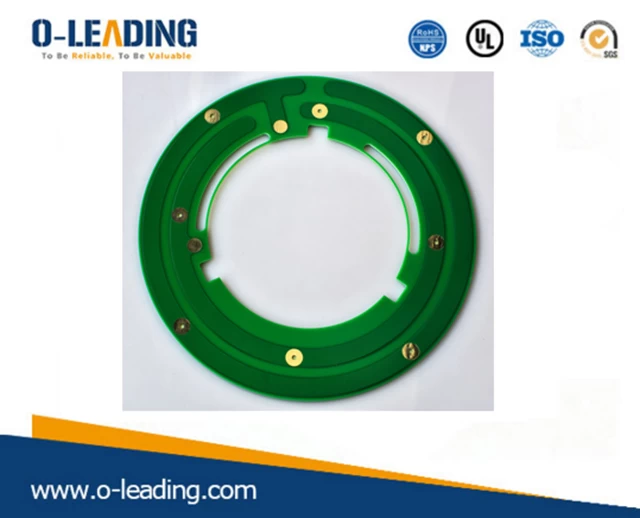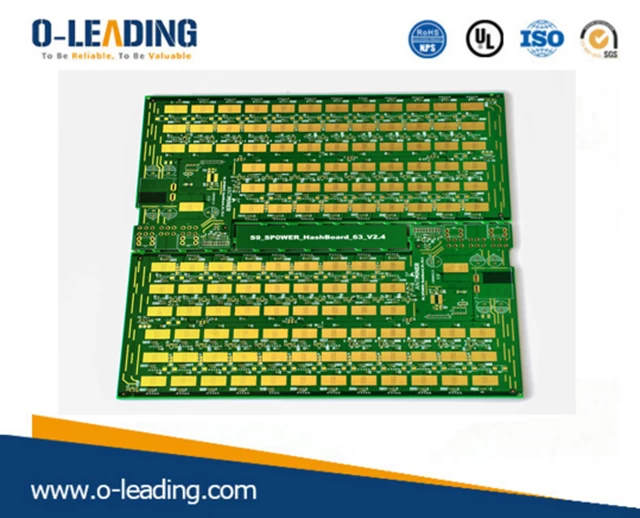9 common senses for basic PCB inspection
1
It is strictly forbidden to use the grounded test equipment to contact the TV, audio, video and other equipment on the backplane to detect the PCB without the isolation transformer.
It is strictly forbidden to directly test the TV, audio, video and other equipment without power isolation transformer with the equipment that is grounded.

Buried vias manufacturer china
Although the general tape recorder has a power transformer, when it comes to a special TV or audio device that has a large output power or a poor understanding of the nature of the power supply used, it is first necessary to find out whether the chassis of the machine is powered or not. The TV, audio and other equipment with the bottom plate are short-circuited by the power supply, affecting the integrated circuit, causing further expansion of the fault.
2
Inspect the PCB board to pay attention to the insulation performance of the soldering iron.
It is not allowed to use soldering iron for welding. To confirm that the soldering iron is not charged, it is better to ground the soldering iron shell. It should be more careful to the MOS circuit. It is safer to use a low voltage soldering iron of 6~8V.
3
Before testing the PCB board, you need to understand how the integrated circuit and its related circuits work.
Before inspecting and repairing an integrated circuit, first familiarize yourself with the functions of the integrated circuit used, the internal circuitry, the main electrical parameters, the role of each pin, and the normal voltage of the pin, the waveform and the operating principle of the components that make up the peripheral components. If the above conditions are met, analysis and inspection will be much easier.
4
Test PCB board does not cause short circuit between pins.
When measuring voltage or testing waveforms with an oscilloscope probe, the test leads or probes should not be short-circuited between the pins of the IC due to sliding. It is best to measure on a peripheral printed circuit that is in direct communication with the pins. Any short circuit in any moment can easily damage the integrated circuit, and more care should be taken when testing flat-packaged CMOS integrated circuits.
5
Detecting PCB board test instrument internal resistance is large.
When measuring the DC voltage of the integrated circuit pin, you should use a multimeter with an internal resistance greater than 20KΩ/V. Otherwise, there will be a large measurement error for some pin voltages.
6
Pay attention to the heat dissipation of the power integrated circuit when detecting the PCB board.
The power integrated circuit should have good heat dissipation, and it is not allowed to work under high power without a heat sink.
7
It is reasonable to detect PCB board leads.
If it is necessary to add external components instead of the damaged parts inside the integrated circuit, small components should be selected, and the wiring should be reasonable to avoid unnecessary parasitic coupling, especially to deal with the grounding between the audio power amplifier integrated circuit and the preamplifier circuit. end.
8
Check PCB board to ensure welding quality.

Multilayer board manufacturer china
It is welded firmly during welding, and the accumulation of solder and the pores are likely to cause solder joints. The soldering time is generally less than 3 seconds, and the power of the soldering iron is applied to the internal heat type of about 25W. The soldered integrated circuit should be carefully viewed. It is best to use an ohmmeter to measure whether there is a short circuit between the pins, and confirm that there is no solder adhesion and then turn on the power.
9
Do not easily determine the damage of the integrated circuit by detecting the PCB board.
Do not easily judge that the integrated circuit is damaged. Because most of the integrated circuits are directly coupled, once a certain circuit is abnormal, it may cause multiple voltage changes, which are not necessarily caused by integrated circuit damage. In some cases, the voltage of each pin is measured and normal. When the values match or are close, it does not necessarily mean that the integrated circuit is good, because some soft faults will not cause a change in the DC voltage.
PCB board debugging method.
For the new PCB board that I just got back, we must first observe whether there are any problems on the board, such as whether there are obvious cracks, short circuit or open circuit. If necessary, check if the resistance between the power supply and the ground is large enough.
For a newly designed circuit board, debugging often encounters some difficulties, especially when the board is large and there are many components, it is often impossible to start. But if you master a reasonable set of debugging methods, debugging will be more effective.
PCB board debugging steps.
1. First observe whether the PCB board has obvious cracks, short circuits or open circuits. If necessary, check if the resistance between the power supply and the ground is large enough.
2, then install the components. Modules that are independent of each other, if you are not sure that they are working properly, it is best not to install them all, but to install some of them (for smaller circuits, you can install them all at once), so that it is easy to determine the fault range. When you have problems when you are not getting it, you can't start.
In general, you can install the power supply first, and then power on to check if the power supply output voltage is normal. If you don't have much control when powering up (even if you have great confidence, it is recommended to add a fuse, just in case), consider using an adjustable regulated power supply with current limiting.

SMD stencil manufacturer china
First, preset the overcurrent protection current, then slowly increase the voltage value of the regulated power supply, and monitor the input current, input voltage, and output voltage. If there is no overcurrent protection and other problems during the upward adjustment, and the output voltage is also normal, the power supply is OK. Otherwise, disconnect the power supply, look for the point of failure, and repeat the above steps until the power is normal.
3. Next, gradually install other modules. After each module is installed, power on the test. Follow the above steps when powering up to avoid over-current and burn out components due to design errors or/and installation errors.
Looking for a faulty PCB board.
1.Measuring voltage method to find faulty PCB board.
The first thing to confirm is whether the voltage of each chip's power supply pin is normal, and then check whether the various reference voltages are normal, and whether the working voltage of each point is normal. For example, when a general silicon transistor is turned on, the BE junction voltage is about 0.7V, and the CE junction voltage is about 0.3V or less. If the BE junction voltage of a triode is greater than 0.7V (except for special triodes, such as Darlington), it may be that the BE junction is open.
2, signal injection method to find faulty PCB board.
Add the signal source to the input, and then measure the waveform of each point in turn to see if it is normal to find the fault point. Sometimes we will use a simpler method, such as holding a dice by hand, touching the input terminals of each level to see if there is any reaction at the output, which is often used in audio, video and other amplifier circuits (but note that the hot backplane This circuit cannot be used for circuits or circuits with high voltages, otherwise it may cause electric shock).
If there is no reaction at the previous level and there is a reaction at the next level, the problem is at the previous level and should be checked.
































